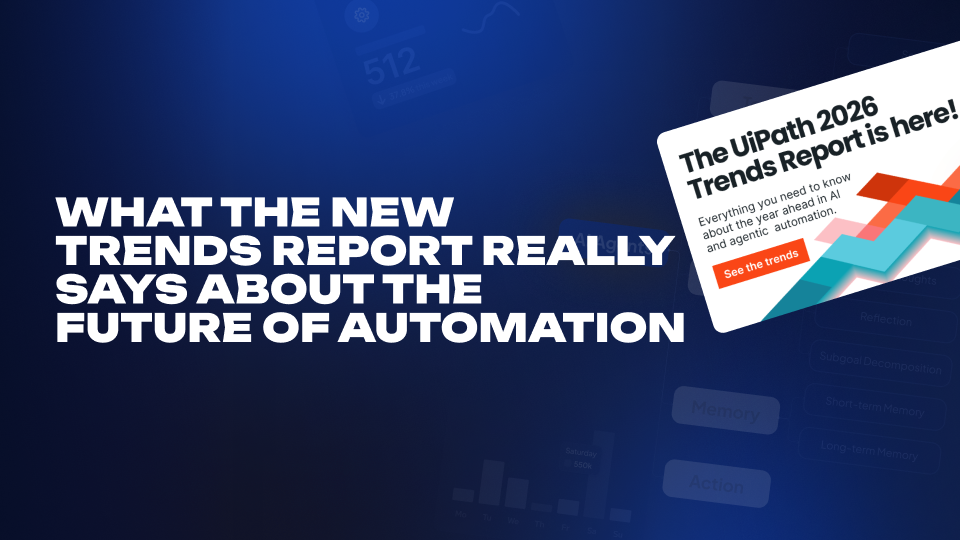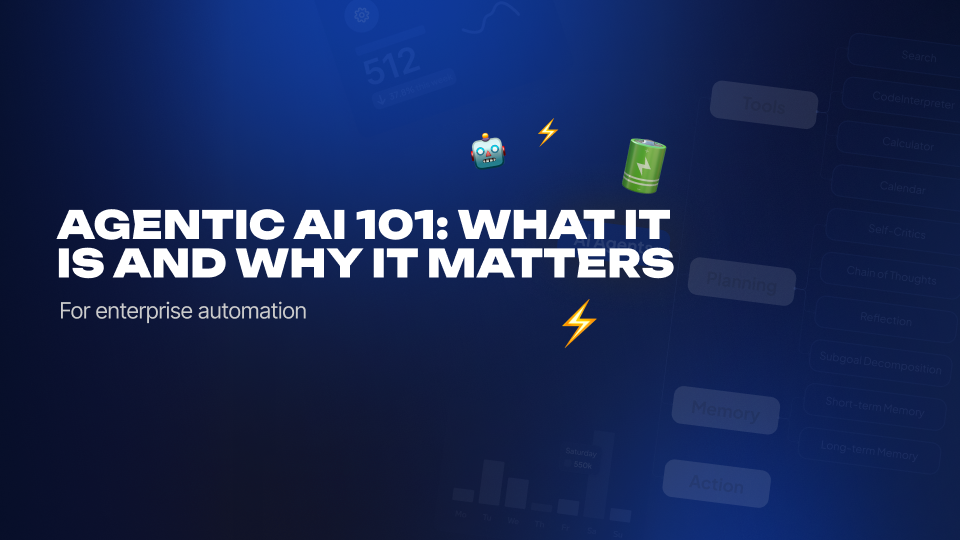
The Rise of the Robotic Operations Control Room: Why Your RPA Success Depends upon it
Robotic Process Automation (RPA) brought huge benefits to organizations over the past decade. However, as RPA deployments scale from a few bots to hundreds, many organizations realize the need for dedicated support operations to optimize their automation investments. Enter the Robotic Operations Control Room (ROC).
A ROC is a critical function. It handles monitoring, managing, and governing an organization's digital workforce. As a ‘control tower’ for RPA, a ROC enables organizations to maximize the value bots deliver. But what is a robotic operations control room (ROC)? What benefits does it bring to an organization? Read on to find out.
Why a Maturing RPA Program Needs a Robotic Operations Control Room
The adoption of Robotic Process Automation (RPA) is increasing. So, a Robotic Operations Center (ROC) and an Intelligent Automation Management Platform (IAMP) are critical. Each is key to the success of organizations' automation initiatives due to many factors, such as:
- Bot Performance Monitoring: If you can’t measure it, you can’t manage it. IAMPs real-time tracking of bot workflows, exceptions, licences, and other key performance indicators helps a ROC manage RPA operations more effectively. An IAMP supports a ROC, proactively monitors RPA infrastructure, and automatically addresses any issues related to bot functionality. For example, an IAMP should have an auto-reboot feature, refresh the PC operating system and clear temporary data to maintain optimal performance.
- RPA Infrastructure Maintenance: Maintaining RPA infrastructure is critical. This includes patches, updates, bug fixes, and managing licenses. A lot of tasks are needed to support a bot capability 24/7. An IAMP offers a ROC a centralized control panel for all RPA resources, reducing the cost of RPA operations whilst boosting its ROI.
- License Optimization and Smart Bot Orchestration: Dynamic bot resource allocation helps meet fluctuating automation workflow demands at an affordable license cost. Instead of a ROC having to manually manage licence resources, an IAMP dynamic scheduling capability enables organizations to issue licences to robots as needed.
- Run-time Optimization: By dedicating talent to ‘keeping the lights on’ activities, RPA managers can better control the cost of bot support. With an IAMP in place, a business can also avoid a simultaneous linear growth in the bot licence and support staff costs.
- Measuring Impact and Value: Accurate billing to organizational business units based on bot usage is needed to evidence bots’ value. An IAMP tracks bot usage and makes that information available to business stakeholders 24/7 on behalf of the ROC. As a result, the number of disputes about bots adding value decreases to zero as bot operations become transparent to everyone.
- Incident Management, Error Anomaly Detection and Prevention: Rapid diagnosis of bot issues via analytic dashboards, automatic bot and virtual machine restarts enable the ROC to keep bots operational, maximizing uptime and the value RPA automation brings to the business.
- Quality Assurance: Preventing errors by validating bot configurations and code pre-deployment is a key ROC activity, as fixing code errors in requirements is 100 times cheaper than fixing them in production.
- Governance & Security: Organizations must create and enforce RPA policies and standards. This is critical to avoid redundant automation work and cost. A ROC is both accountable and responsible for delivering both.
Without a dedicated ROC and an IAMP controlling operations, RPA developers are hindered by mundane support tasks. This slows innovation as process automation talent is misallocated toward 'keeping the lights on' activities rather than value creation. Mature RPA adopters realize they need to evolve. They recognize they must introduce a ROC to optimize RPA operations to deliver the most value from workflow automation to an organization.
The Business Case for Intelligent Automation Management Platforms
Intelligent automation management platforms provide ROC teams with the comprehensive tools to maximize ROI from RPA programs. By combining monitoring, orchestration, and governance into a unified command centre, IAMPs act as a ‘mission control’ for digital workforces. Beyond boosting developer productivity and bot uptime, intelligent automation management platforms deliver compelling business value. With smoother deployments and optimized licensing, bots can help organizations achieve a much better return on automation investments by.
Additionally, IAMPs ability to deliver granular analytics delivers far greater RPA program transparency, enabling an RPA centre of expertise to accurately chargeback RPA costs. Transparency of robot activity and transaction volumes resolves clashes around internal billing and makes cost allocation more agnostic than argumentative. It changes the dynamic of conversations between business stakeholders and RPA centre of expertise team from one of conflict, toward one of value creation.
By proactively preventing issues and resolving incidents faster, IAMPs greatly reduce ROC function support costs freeing organizations to scale confidently knowing their bots are expertly managed. Rather than obstructing RPA's potential, intelligent automation management platforms (IAMPs) support a ROC unlock it in a well governed manner.
The Verdict: Elevate Your ROC Capabilities to Unlock RPA Potential
Leaders empower their automation teams with a strong control room, which maximizes their return on investment in RPA. Investing in a ROC and an IAMP can bring game-changing benefits, maximizing organizations' return on investment in RPA. These include a 30%+ cut in automation support costs, a 38% drop in MTTR, and a 23% increase in RPA robot uptime.
In addition, bot auditability, code security, and software quality improve dramatically, enabling improved bot uptimes. Furthermore, more RPA developers can build more bots rather than firefighting support issues, enhancing RPA program ROI by 19%.
The future is bright for organizations that use workflow automation, and a ROC is critical to that success.









